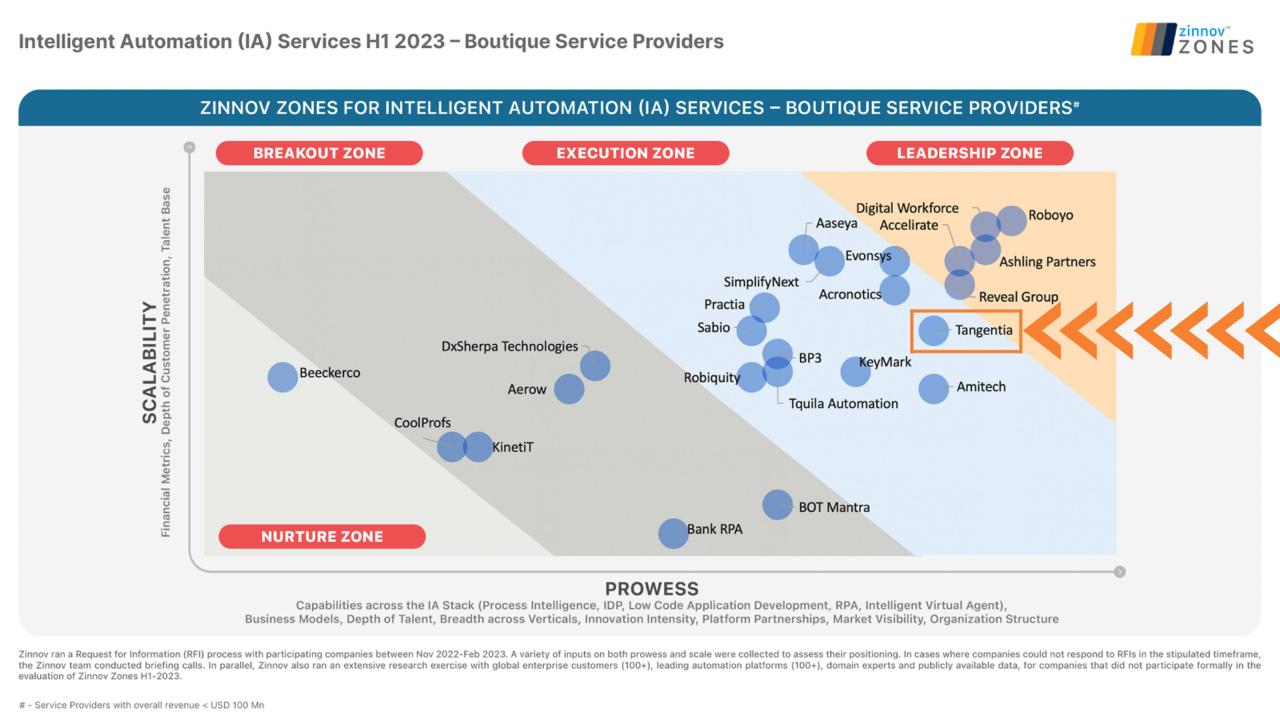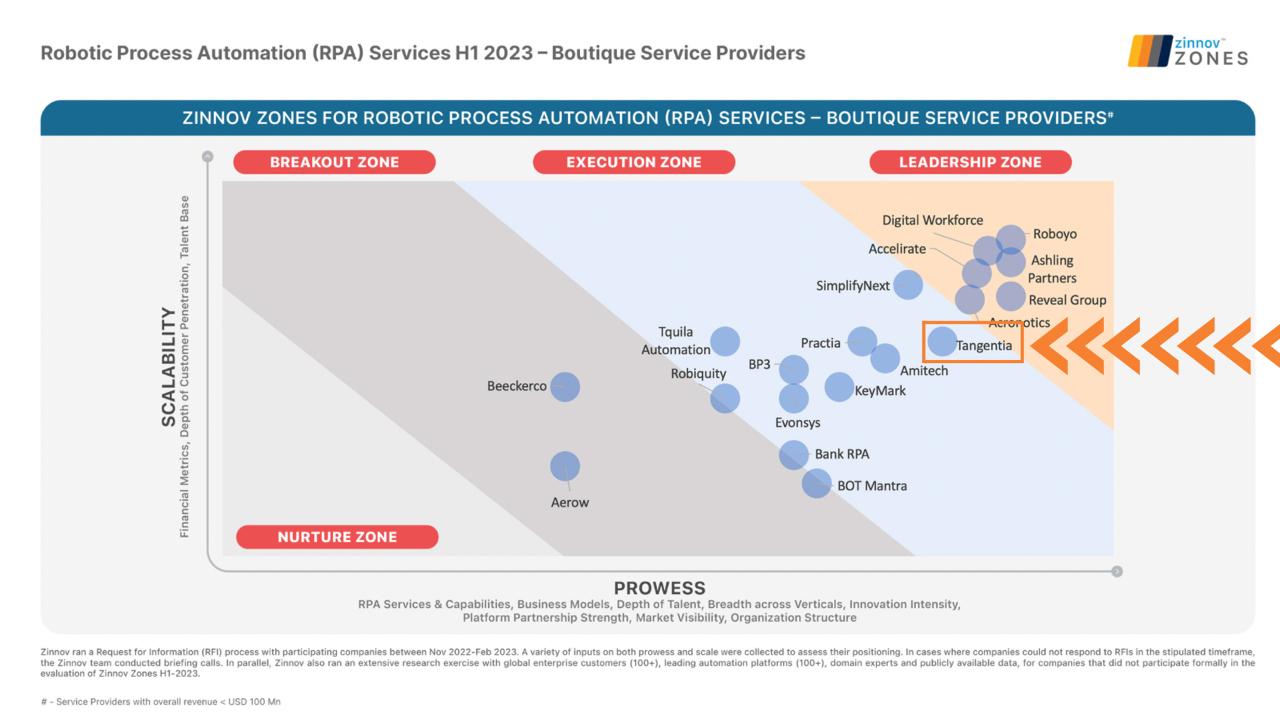|
||||||||||||||||||||||||||||||||||||||||||||||||||||||||||||||||||||||||||
|
|
||||||||||||||||||||||||||||||||||||||||||||||||||||||||||||||||||||||||||
|
We live in a world in which applications are the doorway that connects customers, suppliers, and other key players to your business. This makes the ability to build high-quality applications quickly and easily a must. OutSystems has created a no-code application-building platform that makes it possible to rapidly build essential applications to power your business.
High-performance low-code allows you to create sophisticated, strategic, and vital internal and consumer applications. As you transition from a department app to an enterprise-wide programme, it has no restrictions when it comes to offering end-to-end application development and upgrades. There are no additional licensing requirements, no scalability problems, and no data “do-overs” for updates. We describe high-performance low-code in this blog post, along with four features that set it apart from existing low-code platforms.
Today's applications are difficult to create by hand and can take months or even years. Low-code reduces that time to weeks, which enables IT teams to build applications with little to no manual coding.
So how widespread is low-code? Let's examine the marketplace. AI Multiple discovered 223 suppliers who provide low-code in January 2023. What a bewildering variety of vendors there are. By reducing the number of low-code providers to 17 in its 2023 Gartner® Magic QuadrantTM and Critical Capabilities study, Gartner has done the market a favour. However, picking a low-code vendor might still be challenging because many of them resemble one another. It all depends on the skills you need to acquire.
You don't need to slog through the lengthy list if you want to employ low-code to create an application that is essential to the success of your company, frontend, backend, automation, and all. High-performance low-code consumer apps, sophisticated process automation, ERP, CRM, and other tools can handle it all. Irrespective of their size or scope, low-code offers everything you need to construct apps quickly, precisely, and consistently. High-performance low-code dramatically speeds up development, encourages top-tier CI/CD, and enables teams to quickly produce complex, one-of-a-kind programmes.
Its four key traits that set it apart from the competition are:
Full-stack development's power is offered by high-performance low-code without its drawbacks. Without being constrained by technology, giving up control of the code, or wasting time, your team may create apps. Specialized AI-powered tools assure architectural soundness, spot vulnerabilities, and eliminate bottlenecks.
High-performance low-code gives new developers the tools they need to build automation, frontends, backends, and user interfaces while enabling them to become cloud-native powerhouses without having to pick up new skills.
Professionals can focus on the development that requires their special touch and years of experience, and they can even use custom code to expand what they create. They write connections themselves or use open-source ones to create programmes that seamlessly link with current systems.
High-performance low-code also offers the ability to speed up the entire software development lifecycle through the intelligent use of automation and AI. It provides your team with an AI-based coding expert that guides them through difficult builds in real-time and relieves them of tedious work.
Your code must adhere to strict architectural standards, which are ensured by an AI-based business architect who is always on call. Automated visual debugging and merging can triage differences brought about by developers working on the same module, pause execution at breakpoints, and run logic step-by-step to detect mistakes.
Very agile is high-performance low-code. It gives you the tools you need to create internal apps, portals, and core systems—as well as pixel-perfect, strong, responsive, and AI-driven consumer applications and experiences—and update them as soon as necessary.
Accessible through a development environment or a central repository, reusable modules, connectors, and UI components hasten the delivery of applications. When the market and business require a significant change quickly, it is simple to drop them into apps, saving hours of busy work.
In that it doesn't restrict you to particular tools, settings, operating systems, or interpretation models, high-performance low-code is also agile. For instance, high-performance low-code gives you the option to interact with existing DevOps tools rather than requiring you to utilize a proprietary solution if you currently use such tools. For development, you have a choice of on-premises, cloud-native, public, and private clouds.
Instead of using emulators, your developers can use an IDE designed for Mac development if that is their preferred platform.
They can use a cloud-native runtime that includes Kubernetes, Linux containers, and contemporary cloud services for data, networking, authentication, provisioning, and more if they want to become top-tier cloud-native developers without having to put in any of the effort required to set up cloud architecture or learn serverless development.
To ensure that you never have to worry about cloud crashes or data loss, high-performance low-code takes protecting what you construct to the highest degree.
Although many low-code platforms incorporate security into the process of creating apps, high-performance low-code provides source code that can be checked for flaws and bugs. That kind of protection is not provided by low-code systems that create programmes by reading models.
The platform's high-performance low-code security features 500 validations from design to runtime to guarantee that anything you create with it is secure from the start. Your apps receive automatic updates with fixes for DDOS, newly discovered code vulnerabilities, mobile threats, and other safeguards.
You can use corporate SAST solutions, which are specific to high-performance low-code, to boost assurance. In addition to offering compliance designations like SOC2, HIPAA, and others, it delivers a comprehensive governance mechanism that is appropriate for enterprise software factories.
When necessary, high-performance low-code allows you to swiftly scale up applications from departmental levels with a small number of users to ones that can support millions of simultaneous users without sacrificing speed or performance. With its cutting-edge visual, model-driven development tools and top-tier CI/CD techniques, your team becomes a factory for cloud-native innovation.
You don't even need to grow the number of applications you need to create in order to scale your app—complex, proprietary scripting is not required. With just one click, your teams can publish, and dependency analysis keeps even the biggest modifications from crashing the app or your portfolio. Code is regularly reviewed by an AI-driven performance tool, ensuring that apps consistently operate and scale at their best.
In order to uncover ways to decrease technological debt and guarantee best practices are followed, high-performance low-code also automates the scanning of a full portfolio of hundreds of apps. Built-in analytics and testing tools track user experience and spot bottlenecks. Receiving customer input directly within the apps your developers create is also advantageous to you.
|
||||||||||||||||||||||||||||||||||||||||||||||||||||||||||||||||||||||
|
Tangentia, a global autonomous enterprise company, has been recognized as a strong performer in both the Intelligent Automation (IA) Services – Boutique Service Providers and Robotic Process Automation (RPA) Services – Boutique Service Providers categories by Zinnov Zones. This is our first analyst report. This recognition is a testament to our team's unwavering dedication, hard work, and innovative approach to delivering agile and impactful digital transformation solutions to our customers.
The Zinnov Zones report is an annual study that evaluates global service providers on their overall prowess and scalability in delivering intelligent automation and robotic process automation services. The report analyzed over 25 global providers and assessed them on various parameters such as market presence, innovation, capabilities, and customer feedback.
Tangentia's recognition as a strong performer in both the IA and RPA services categories reaffirms its commitment to delivering top-notch services and solutions to its clients. With over 1,500 global customers, Tangentia has a proven track record of providing innovative digital transformation solutions that drive business growth and efficiency.
Speaking on the achievement, Tangentia CEO, Vijay Thomas, said, “We are delighted to be recognized as a strong performer in both the Intelligent Automation and RPA Services categories by Zinnov Zones. This recognition is a testament to the hard work and dedication of our team and our focus on delivering value to our clients through innovation and customer-centricity.”

Tangentia is one of the leading providers of AI services, helping companies harness the power of AI. AI technologies such as Natural Language Processing (NLP), Machine Learning, text analytics, speech recognition, and language translation can help your company improve task automation and customer communication, boosting efficiency and saving money. AI involves the use of science and engineering to create intelligent machines that are capable of performing tasks that are generally performed by humans. We work closely with companies of any size to help them determine the best way to implement AI to improve automation and drive value.

RPA forms the foundation of digital transformation, making it possible to restructure business processes and information systems to bolster innovation and fuel growth. The modernization of enterprise is an ongoing endeavor that has only accelerated in recent years. Robotic Process Automation (RPA) is at the leading edge of this transformation, enabling organizations to digitize their processes and business operations at the deepest level. This frees up employees to become true innovators and contributors to company growth.
Sign up for a free POC worth $5000 for RPA or for a review of your existing RPA and AI implementation. Book a discovery call with a member of Tangentia’s automation team today to find out more about what RPA can do for you.
Tangentia's expertise in intelligent automation and RPA services has helped businesses across multiple industries to automate their processes, reduce operational costs, and increase efficiency. With this recognition by Zinnov Zones, Tangentia further strengthens its position as a leading global digital transformation company.
The Future is Autonomous, and we remain committed to being partners for growth with the enterprises of tomorrow. As part of our mission to make businesses more agile, efficient, and competitive, we encourage them to Pursue the adoption of an Autonomous Digital Enterprise, which can streamline enterprise challenges and unlock game-changing possibilities.
|
In today's fast-paced business environment, staying competitive is a top priority for any B2B organization. With the rise of digital technologies, the B2B landscape has undergone a significant transformation, and companies must adapt to stay ahead of the competition. In this blog, we will discuss some strategies that B2B companies can adopt to stay competitive.
Digital transformation is the key to staying competitive in the B2B industry. It involves the integration of digital technologies into all aspects of your business, from marketing and sales to operations and customer service. By embracing digital transformation, B2B companies can streamline their processes, improve efficiency, and drive growth. For example, implementing a CRM system can help you manage your customer relationships more effectively while adopting automation technology can help you reduce manual work and improve accuracy.
In the B2B industry, customer experience is critical to success. B2B customers expect a high level of service, and companies that fail to meet these expectations risk losing business to their competitors. To stay competitive, B2B companies must focus on delivering an exceptional customer experience. This can be achieved by investing in customer service, providing personalized solutions, and being proactive in addressing customer needs.
B2B customers have unique needs, and offering customizable solutions is a great way to stay competitive. By providing tailored solutions, B2B companies can differentiate themselves from their competitors and offer added value to their customers. This can be achieved by leveraging data analytics to gain insights into customer preferences and needs and then using this information to develop customized solutions.
Data analytics is a powerful tool that can help B2B companies stay competitive. By analyzing data, companies can gain insights into customer behavior, market trends, and the performance of their own business. This information can be used to make informed decisions and develop more effective strategies. For example, data analytics can be used to identify new opportunities for growth, optimize pricing strategies, and improve supply chain management.
In today's digital age, maintaining a strong online presence is essential for any B2B company. This includes having a user-friendly website, active social media accounts, and engaging content. By creating a strong online presence, B2B companies can attract new customers, build brand awareness, and stay top of mind with their existing customers. It's also important to stay up-to-date with the latest digital marketing trends and technologies, such as search engine optimization and content marketing.
Finally, fostering innovation is another key strategy for staying competitive in the B2B industry. Innovation can take many forms, from developing new products and services to adopting new technologies and processes. By fostering a culture of innovation, B2B companies can stay ahead of the curve and remain relevant in an ever-changing business landscape.
In conclusion, staying competitive in the B2B industry requires a strategic approach that leverages digital technologies, focuses on customer experience, offers customizable solutions, leverages data analytics, maintains a strong online presence, and fosters innovation. By adopting these strategies, B2B companies can adapt to changing market conditions, differentiate themselves from their competitors, and drive growth.
|
As the CEO of a rapidly growing tech enterprise, I understand the importance of staying ahead of the curve and being aware of the latest trends in order to make strategic decisions for our organization. Let's talk about the latest developments and innovations in the tech industry to look out for in 2023 to stay up to date with the latest advancements and their potential impact on various industries.
Our goal is to provide valuable insights and information that will help you stay ahead of the curve in the ever-changing tech landscape. There are several technology trends that are forecasted to continue to grow and evolve in the next few years. Some of the most significant trends include:

One of the key components of an autonomous enterprise is the use of AI and machine learning (ML) to automate decision-making. This can include everything from analyzing data to identifying patterns and making predictions.
Another important aspect of an autonomous enterprise is the use of IoT and edge computing. This allows the autonomous enterprise to collect, process, and analyze enormous amounts of data in real time, making it possible to make decisions and take actions in near-real time. This is especially important in industries such as manufacturing, planning and transportation where rapid decision-making is crucial.
The autonomous enterprise also relies on automation and self-service capabilities, which allow it to operate with minimal human intervention. This can include automating routine tasks such as inventory management and supply chain operations, as well as providing self-service capabilities to customers, such as online ordering and account management.
An autonomous enterprise also requires a robust and secure infrastructure that can handle the large amounts of data and automation required to support it. This includes technologies such as cloud computing, which allows for scalability and flexibility, and blockchain, which provides a secure and decentralized way to store and manage data.
These are just a few examples of the technology trends that are forecasted to continue to grow and evolve in the next few years. It is important to note that technology is constantly evolving, and latest trends and developments can emerge suddenly, making it challenging to predict the exact trajectory of certain technologies.
Additionally, we are also seeing a shift towards more sustainable and environmentally-friendly technology, which is likely to become an important trend in the future. Overall, the technology industry is an exciting and dynamic field that offers many opportunities for innovation and growth.
In conclusion, technology is constantly evolving and changing the way we live and work. Keeping an eye on the latest trends and developments can help businesses and individuals stay ahead of the curve and take advantage of new opportunities. Hope this helps you on this journey of discovery and innovation in the tech industry.
|
|
|||||||||||||||||||||||||||||||||||||||||||||||||||||||||||||||||||||
|
|||||||||||||||||||||||||||||||||||||||||||||||||||||||||||||||||||||
|
|
|||||||||||||||||||||||||||||||||||||||||||||||||||||||||||||||||
|
|||||||||||||||||||||||||||||||||||||||||||||||||||||||||||||||||